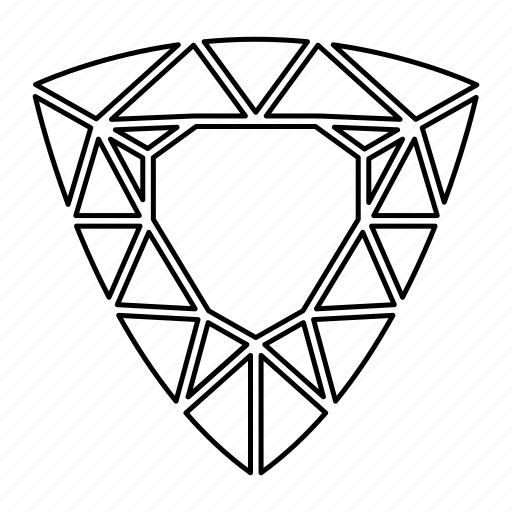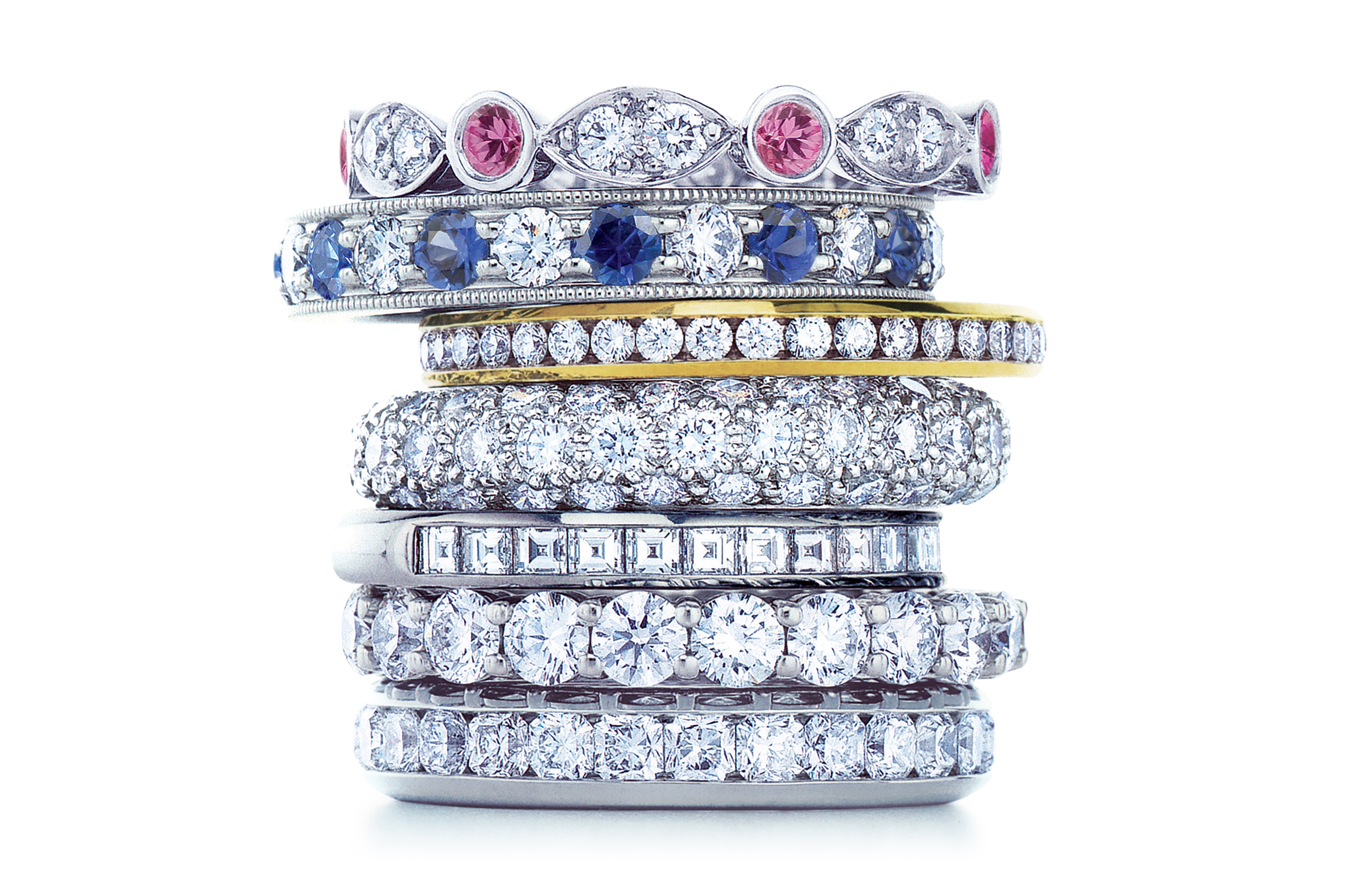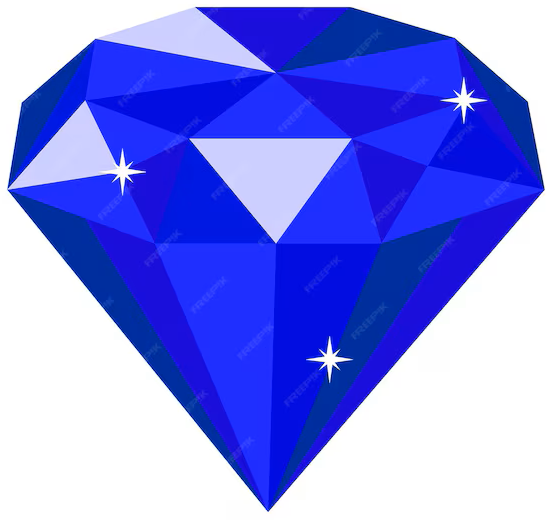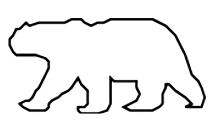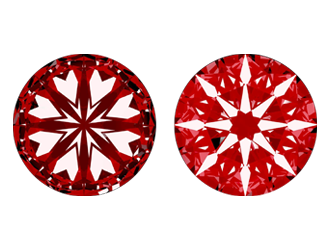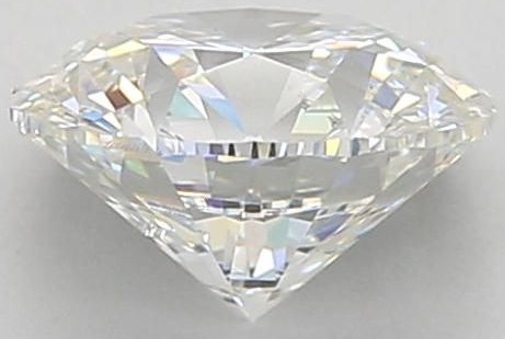0 of 0 Results

Lifetime Warranty

Hassle Free Returns

Free Resizing

Conflict Free Diamonds
FAQs about Included 1 Diamonds
In the diamond assiduity the clarity grade of a diamond is used to describe the presence and visibility of internal characteristics( eliminations) and external characteristics( mars) within the gravestone. The clarity grade of a diamond provides information about its overall chastity and how fluently these characteristics are visible to the naked eye or under exaggeration. The clarity grading scale used by utmost estimable diamond grading laboratories similar as the Gemological Institute of America( GIA) consists of several grades ranging from indefectible( FL) to Included( I3). Each grade represents a different position of clarity with indefectible being the loftiest and Included being the smallest. In this scale an I1 diamond falls within the Included range which means it has eliminations that are fluently visible to the naked eye. These eliminations may affect the overall translucency and brilliance of the gravestone. While I1 diamonds have visible eliminations they're generally considered to be the smallest clarity grade that's still commercially available and can be used in jewelry. Then is a brief overview of the clarity grades and how they compare indefectible( FL) and Internally indefectible( IF) These diamonds have no visible eliminations or mars under 10x exaggeration. veritably veritably Slightly Included( VVS1 and VVS2) These diamonds have eliminations that are extremely delicate to see under 10x exaggeration. veritably Slightly Included( VS1 and VS2) These diamonds have eliminations that are visible under 10x exaggeration but may still be considered eye-clean. Slightly Included( SI1 and SI2) These diamonds have eliminations that are conspicuous under 10x exaggeration and may or may not be visible to the naked eye. Included( I1 I2 and I3) These diamonds have eliminations that are fluently visible to the naked eye with I1 being the loftiest clarity grade within the Included range. It's important to note that within each clarity grade there can still be variations in the size type and position of the eliminations which can affect the overall appearance and value of the diamond. thus it's recommended to examine the specific characteristics of an I1 diamond to determine its advisability for your individual preferences and budget.
The clarity grade of a diamond is determined by assessing its internal characteristics known as eliminations and external characteristics known as mars. These factors are assessed under exaggeration and colorful lighting conditions to determine the diamond's overall clarity grade. For an I1( Included 1) clarity grade the diamond will have conspicuous eliminations that can be seen with the naked eye or under 10x exaggeration. These eliminations may affect the overall brilliance and translucency of the diamond. Then are some factors that impact the clarity grade of an I1 diamond Size and Visibility of Eliminations Eliminations in an I1 diamond are generally larger and more prominent compared to advanced clarity grades. The size number and position of the eliminations play a significant part in determining the clarity grade. Larger or further visible eliminations will affect in a lower clarity grade. Type of Eliminations The type of eliminations can vary and includes characteristics like chargers feathers shadows or internal graining. The nature and visibility of these eliminations will impact the clarity grade. For illustration a single small addition may be less conspicuous than multiple eliminations clustered together. position of Eliminations Eliminations located near to the center or along the table( the flat top face of the diamond) are more likely to affect the diamond's brilliance and translucency. Eliminations near the belt( the external edge of the diamond) may have lower impact on the overall appearance. Relief and Differ The relief of eliminations refers to how fluently they can be seen against the background of the diamond. Eliminations with high relief are more visible and can lower the clarity grade. also if the eliminations discrepancy significantly with the color of the diamond they may be more conspicuous and affect the grade. It's important to note that while an I1 clarity grade indicates visible eliminations the appearance and impact of these eliminations can vary from one diamond to another. It's recommended to view and assess the diamond in person or with the help of a professional to understand the specific characteristics and overall visual impact of an I1 diamond.
In I1( Included 1) diamonds which is a clarity grade on the Gemological Institute of America( GIA) grading scale you can anticipate to find a range of eliminations. The specific type and appearance of eliminations can vary from one diamond to another. Then are some common types of eliminations set up in I1 diamonds Feathers Feathers are internal fractures or cracks within the diamond that act feathers. They can vary in size and shape. Chargers Chargers are mineral eliminations that are frequently seen as small solid or transparent substances trapped within the diamond. They can include minerals like garnet spinel or other chargers. shadows shadows are clusters of bitsy point eliminations or haze- suchlike areas within the diamond. They can affect the translucency and brilliance of the gravestone. Included chargers These are larger chargers or mineral eliminations that are more conspicuous than the lower chargers mentioned before. They can have different shapes and colors. depressions depressions are openings or voids within the diamond caused by natural processes. They can range in size and may occasionally be filled with other substances or fresh eliminations. Knots Knots are diamond chargers that extend to the face or incompletely access it. They can appear as small raised areas on the diamond. Graining Graining refers to irregularities in the crystal clear structure of the diamond performing in a grain- suchlike appearance. These can affect the clarity and occasionally the translucency of the gravestone. It's important to note that the visibility and impact of these eliminations can vary within the I1 clarity grade and not all I1 diamonds will have the same types or intensity of eliminations. When copping a diamond it's recommended to view it in person or ask for a detailed grading report to understand the specific characteristics of the diamond's eliminations.
I1 diamonds are distributed as having eliminations that are visible to the naked eye. The term I1 is a clarity grade used in the diamond assiduity to describe the position of eliminations present in a diamond. The clarity grade scale ranges from indefectible( no eliminations) to Included( visible eliminations). I1 stands for Included 1 indicating that the diamond has eliminations that are fluently visible without exaggeration. These eliminations may be conspicuous to the naked eye and they can vary in size type and position within the diamond. The visibility of the eliminations will depend on the specific characteristics of each individual I1 diamond.
The price of an I1 diamond is generally lower compared to advanced clarity grades. Clarity is one of the Four Cs of diamond grading along with cut color and carat weight. The clarity grade of a diamond refers to the presence of internal or external excrescencies known as eliminations and mars independently. The Gemological Institute of America( GIA) grades diamond clarity on a scale ranging from indefectible( FL) to Included( I3) with I1 being one of the lower grades. An I1 clarity diamond generally has visible eliminations that can be seen without exaggeration. These eliminations may affect the overall brilliance and sparkle of the gravestone. In discrepancy advanced clarity grades similar as VVS( veritably veritably Slightly Included) VS( veritably Slightly Included) and indeed advanced grades like IF( Internally indefectible) and FL( indefectible) are considered to have smaller or no visible eliminations making them more desirable and precious. Due to the visible eliminations in I1 diamonds their prices are generally lower compared to advanced clarity grades. The specific price difference will depend on other factors similar as the diamond's cut color and carat weight. It's important to note that pricing can also vary grounded on request conditions and individual dealer pricingstrategies.However it's recommended to consult with a estimable jeweler who can give you with specific pricing information grounded on your preferences If you are considering copping a diamond.
I1 diamonds also known as Included 1 diamonds are a grade within the diamond clarity scale. The clarity scale is used to assess the presence of internal or external excrescencies called eliminations and mars independently in a diamond. I1 diamonds have visible eliminations that may be fluently conspicuous to the naked eye. These eliminations can range from small to large and they may affect the overall beauty and sparkle of the diamond. Due to their lower clarity grade I1 diamonds are generally considered to be less desirable for engagement rings compared to diamonds with advanced clarity grades. Engagement rings are generally intended to showcase a diamond's brilliance fire and overall beauty. While I1 diamonds may be more affordable compared to advanced clarity grades their visible eliminations can abstract from the diamond's appearance. still particular preferences and budget constraints can vary and some individualities may still find I1 diamonds suitable for their engagement rings. Eventually the choice of diamond clarity for an engagement ring depends on the existent's preferences budget and their amenability to compromise between clarity and other factors similar as size color and cut. It's important to view the diamond in person or examine detailed images before making a decision as the appearance of eliminations can vary significantly within the I1 clarity grade.
The typical size range for I1 diamonds also known as Included 1 diamonds can vary depending on the specific diamond and the grading norms used. still I1 diamonds generally fall within the range of0.10 carats to5.00 carats or further. Carat is a unit of weight for rocks with one carat equal to0.2 grams. It's important to note that the size or carat weight of a diamond is separate from its clarity grade. Clarity refers to the presence of internal or external characteristics known as eliminations and mars independently. In the case of I1 diamonds they've eliminations that are visible to a trained grader under 10x exaggeration. Keep in mind that while I1 diamonds may offer a more affordable option compared to advanced clarity grades the visibility of eliminations can vary significantly within the I1 range. thus it's judicious to view the diamond in person or request detailed images to assess its appearance and determine if it meets your asked position of clarity.
No it isn't possible to upgrade the clarity grade of a diamond. Diamond clarity is determined by the presence and visibility of internal characteristics( eliminations) and external characteristics( mars) within the gravestone. The Gemological Institute of America( GIA) and other estimable grading laboratories assess the clarity grade grounded on the number size type position and visibility of these characteristics. Once a diamond has been assigned a clarity grade it's considered a endless trait of the gravestone. Clarity characteristics are formed naturally during the diamond's conformation process and they can not be altered or removed through any treatment or improvement styles. still it isn't possible to change its grade to a advanced one If you have a diamond with a lower clarity grade. still if the diamond is set in jewelry and the underpinning has significant metalwork it may be possible to minimize the visibility of certain eliminations by cleverly situating the gravestone or using prickles or bezels to cover them. This doesn't change the factual clarity grade but it can enhance the overall appearance of the diamond.
The appearance of an I1 diamond and a indefectible diamond can differ significantly due to differences in their clarity grades. Clarity is one of the four Cs used to estimate a diamond's quality with the others being carat weight color and cut. A indefectible diamond also known as an internally indefectible( IF) diamond is extremely rare and has no internal or external excrescencies or eliminations visible under 10x exaggeration. These diamonds have exceptional clarity and their appearance is characterized by maximum light reflection and brilliance. The absence of eliminations allows light to pass through the gravestone without inhibition performing in a high position of sparkle and brilliance. On the other hand an I1 diamond is graded with a lower clarity grade. The I stands for included indicating that the diamond has eliminations that are visible to the naked eye. I1 is the first grade within the included range which means the eliminations are more conspicuous compared to advanced clarity grades. In an I1 diamond the eliminations can range from small to significant and they may be visible to the naked eye without any exaggeration. These eliminations can take the form of bitsy chargers feathers shadows or other defects within the diamond. The eliminations in an I1 diamond can affect its translucency and brilliance by snooping with the passage of light through the gravestone. Due to the differences in clarity an I1 diamond is likely to have a lower pristine appearance compared to a indefectible diamond. The presence of visible eliminations may reduce the diamond's overall brilliance translucency and light performance. still it's important to note that the impact of eliminations on the diamond's appearance can vary depending on the specific characteristics and placement of the eliminations within the gravestone.
When buying an I1 diamond which is a grade that indicates the diamond has eliminations that are visible to the naked eye it's important to take certain preventives to insure you are making a wise purchase. Then are some preventives to consider Educate yourself Learn about the 4Cs of diamonds- carat weight color clarity and cut. Understand how these factors affect the appearance and value of a diamond. This knowledge will help you make an informed decision. Choose a estimable jeweler Buy your diamond from a trusted and estimable jeweler or retailer. Look for instruments and confederations with honored associations similar as the Gemological Institute of America( GIA) or the American Gem Society( AGS). This ensures that the diamond has been graded directly and guarantees its quality. Request a diamond grading report Ask for a diamond grading report from a dependable gemological laboratory rather one that's independent of the jeweler dealing the diamond. The GIA AGS and other estimable labs give detailed reports that assess the diamond's characteristics including its clarity grade. check the diamond If possible examine the diamond under exaggeration or with a loupe to get a near look at the eliminations. Consider whether the visible eliminations are respectable to you and will not affect the diamond's overall beauty. Flash back the position size and nature of the eliminations play a part in how conspicuous they are. Consider the setting The choice of a setting can affect how conspicuous the eliminations are. Certain settings like bezel or halo settings can help conceal or minimize the appearance of eliminations. bandy different setting options with your jeweler. estimate the diamond's brilliance While I1 diamonds may have visible eliminations their overall brilliance can still vary grounded on abbreviated quality. Focus on the cut to insure that the diamond has good proportions harmony and polish which will enhance its beauty and sparkle. Compare prices Compare prices of analogous diamonds from different retailers to insure you are getting a fair deal. Take into account the diamond's 4Cs including the clarity grade as well as the overall aesthetics and any fresh features similar as luminescence. Consider particular preferences Eventually it's important to choose a diamond that aligns with your particular preferences and budget. Decide what position of clarity you are comfortable with and prioritize other factors like size or color if they're more important to you. By following these preventives you can make an informed decision and elect an I1 diamond that meets your prospects in terms of quality appearance and value.
When it comes to assessing diamonds the clarity grade of I1 indicates the presence of eliminations that are visible to the naked eye. Eliminations can affect the overall appearance and value of a diamond. While there are no specific diamond shapes that are innately more forgiving for eliminations in I1 diamonds certain diamond shapes may help minimize the visibility of eliminations compared to others. Then are a many factors to consider Brilliant Cut Diamonds Diamond shapes with brilliant cuts similar as round brilliant queen bumper and round tend to have further angles and sparkle. The brilliance and scintillation can help distract the bystander's attention from the eliminations to some extent. Fancy Shape Diamonds Fancy- shaped diamonds similar as emerald asscher and radiant cuts have step- cut faceting styles that produce large open angles. These larger angles can make eliminations more visible especially if they're located near the center of the diamond. Diamond Setting The way a diamond is set can also affect the visibility of eliminations. Choosing a setting style that provides further content and protection similar as a bezel or halo setting can help conceal eliminations. It's important to note that the visibility and impact of eliminations can vary depending on their size position type and the individual characteristics of the diamond. When copping an I1 clarity diamond it's recommended to view the diamond in person or request detailed images and a grading report to assess the visibility and impact of the eliminations before making a decision.
Eliminations can have an impact on the continuity of an I1 diamond. An I1 diamond is a grade within the clarity grading system developed by the Gemological Institute of America( GIA). It stands for Included 1 indicating that the diamond has visible eliminations when viewed under 10x exaggeration. The continuity of a diamond primarily depends on its overall structure and how well it can repel external forces. Eliminations are natural defects or excrescencies that do within a diamond during its conformation. These eliminations can vary in size type and position within the diamond. The impact of eliminations on continuity can depend on several factors Structural Integrity Eliminations can weaken the structure of a diamond particularly if they're large or located near the face. They may produce areas of stress attention within the gravestone making it more susceptible to cracking or dicing. Wear and Tear Eliminations can act as weak points where dirt dust or other patches can accumulate. Over time these patches can beget bruise and wear on the diamond potentially reducing its continuity. Prong Security If an addition is located near the face of the diamond and close to a point setting it may compromise the security of the setting. The addition can ply pressure on the point making it more prone to bending or breaking. Gemstone Integrity Eliminations that extend to the face of the diamond or reach critical areas like the crown or belt can increase the threat of the diamond fracturing or breaking under stress. It's important to note that the specific impact of eliminations on continuity can vary from diamond to diamond depending on the individual characteristics of the addition and the overall quality of the gravestone. In general diamonds with advanced clarity grades( similar as VVS or IF) have smaller and lower conspicuous eliminations making them more durable. still I1 diamonds are considered to have visible eliminations which can potentially affect their long- term continuity. still it's judicious to examine the specific eliminations with the help of a professional gemologist If you're considering copping an I1 diamond. They can give a detailed assessment of the diamond's continuity and companion you in making an informed decision grounded on your preferences and budget.
the Gemological Institute of America( GIA) is extensively regarded as the leading authority in diamond grading. The GIA has established a comprehensive grading system that's extensively used and accepted within the diamond assiduity. The GIA grading system evaluates diamonds grounded on the Four Cs carat weight color clarity and cut. Clarity refers to the presence of internal and external characteristics frequently appertained to as eliminations and mars independently. The GIA clarity scale consists of the following grades from stylish to worst indefectible( FL) Internally indefectible( IF) veritably veritably Slightly Included( VVS1 and VVS2) veritably Slightly Included( VS1 and VS2) Slightly Included( SI1 and SI2) Included( I1 I2 and I3) Within the Included order I1 represents a lower clarity grade compared to the other grades. I1 diamonds generally have conspicuous eliminations that may affect the translucency and brilliance of the gravestone. still it's important to note that the specific appearance and visibility of eliminations can vary among diamonds graded as I1. While the GIA provides guidelines for grading diamond clarity it's worth mentioning that the overall perception of diamond quality including I1 diamonds can vary among different individualities and request parts. Some jewelers or diamond merchandisers may have their own guidelines or groups but the GIA grading system is extensively honored and used as an assiduity standard. It's always recommended to consult with a estimable gemologist or diamond expert for a detailed evaluation of a specific I1 diamond.
Eliminations can significantly impact the brilliance and sparkle of an I1 diamond. An I1 diamond is classified as having eliminations that are visible to the naked eye. The size type and position of the eliminations within the diamond can affect its overall appearance and light performance. Brilliance in a diamond refers to its capability to reflect and refract light creating a foamy effect. Eliminations can intrude with the path of light through the diamond causing it to smatter or be absorbed rather of being reflected back to the bystander's eye. Larger or further multitudinous eliminations can obstruct the inflow of light reducing the diamond's brilliance. also eliminations can affect the dissipation of light within the diamond. dissipation refers to the separation of white light into its spectral colors( rainbow effect) as it passes through the diamond. Eliminations can disrupt this dissipation performing in a less vibrant and less various display of light. The overall impact of eliminations on brilliance and sparkle depends on their characteristics. For illustration Size Larger eliminations tend to have a lesser negative effect on brilliance and sparkle. They can obstruct light more significantly and beget further conspicuous interruptions in the diamond's light performance. Type Different types of eliminations have varying goods. For case dark- multicolored eliminations similar as carbon spots or large feathers can absorb light and reduce the diamond's brilliance. Transparent or white eliminations may have a lower impact on brilliance. position The position of eliminations within the diamond can affect the path of light. Eliminations near the center or crown of the diamond may be more visible and impact brilliance more compared to eliminations near the edges or kiosk. It's worth noting that the overall beauty and advisability of a diamond are private and some individualities may prefer the character and oneness that eliminations bring to a gravestone. still in general advanced clarity grades( similar as VVS VS or SI) are preferred for diamonds with enhanced brilliance and sparkle as they've smaller and lower conspicuous eliminations.
in relation to minimizing the visibility of eliminations in I1 diamonds there are a many diamond cuts that may help. nonetheless it is important to notice that the visibility of eliminations in a diamond is typically determined by way of the readability grade( comparable as I1) and the nature and role of the eliminations themselves. The diamond reduce may have a few affect on the advent of eliminations however it is not a assured end result. Then are a many diamond cuts which can doubtlessly assist limit the visibility of eliminations outstanding reduce The awesome cut that's generally used for spherical diamonds is known for its multitudinous angles that help maximize the diamond's brilliance. The pattern of mild reflection and refraction can every so often masks the visibility of eliminations. Princess cut The queen cut is a famous forecourt or blockish-based diamond cut with a terrific- style hand association. The one of a kind faceting can assist divert interest down from eliminations particularly if they are placed toward the rims. Asscher cut The Asscher reduce is a step- cut diamond shape with a rectangular or blockish appearance. the larger angles and resemblant step- suchlike association can minimize the visibility of eliminations to a point. Radiant reduce The radiant reduce is a blockish or square-structured diamond cut with extremely good- style angles. The pattern of mild reflection can assist masks eliminations especially in the event that they are not located near the center. at the same time as these cuts might also assist reduce the visibility of eliminations it is critical to flash back that an I1 clarity diamond will still have eliminations which can be visible to the naked eye. The specific appearance and role of the eliminations will range from diamond to diamond so it is sensible to examine the diamond in person or request exact snap shots or vids earlier than making a buy choice.
When it comes to diamonds eliminations are considered natural features within the gravestone. They can include colorful types of internal characteristics similar as chargers feathers shadows or pinpoints. Eliminations can affect a diamond's clarity grade and overall appearance. still certain types of eliminations are more desirable than others in I1( Included 1) diamonds. Eliminations that are generally more desirable in I1 diamonds include Feathers Feathers are small internal cracks within a diamond that act feathers. In I1 diamonds lower feathers that don't affect the gravestone's structural integrity are frequently preferred over larger more prominent bones . Pinpoints Prickles are bitsy crystal clear eliminations that appear as small blotches within a diamond. In I1 diamonds lower prickles that aren't exorbitantly concentrated or visible to the naked eye are generally more desirable. shadows shadows are clusters of bitsy point- sized eliminations that produce a hazy or cloudy appearance within a diamond. In I1 diamonds lower thick or more dispersed shadows are preferred as they've a lower impact on the diamond's overall clarity. It's important to note that the advisability of specific addition types can vary depending on particular preferences and the overall appearance of the diamond. Each diamond is unique and the impact of eliminations on a diamond's beauty and value is private. It's recommended to view diamonds in person or consult with a professional jeweler who can give guidance grounded on your specific preferences and budget.
I1 diamonds which are diamonds with eliminations visible to the naked eye are generally treated or enhanced to ameliorate their appearance. Then are some common treatments or advancements applied to I1 diamonds Clarity improvement I1 diamonds frequently suffer clarity improvement treatments to minimize the visibility of eliminations. One popular system is ray drilling where a bitsy ray ray is used to reach and decimate eliminations. Another fashion is fracture stuffing where a glass- suchlike substance is fitted into face- reaching fractures to make them less visible. These treatments can ameliorate the overall clarity and translucency of the diamond. Re-cutting occasionally I1 diamonds arere-cut to ameliorate their appearance. professed diamond knives can strategically remove eliminations or acclimate the angles to maximize brilliance and minimize the visibility of excrescencies. stillre-cutting may also affect in a loss of carat weight. Point Setting In a point setting small essence claws or prickles hold the diamond in place. This type of setting can help hide some of the eliminations or defects by covering them with the essence prickles. It also provides fresh security for the diamond. Cluster Setting Another option is to set the I1 diamond in a cluster setting where multiple lower diamonds compass the center gravestone. The lower diamonds can help distract attention from the eliminations in the I1 diamond and enhance its overall appearance. It's important to note that the treatments mentioned over aren't exclusive to I1 diamonds and can be applied to diamonds of colorful clarities. still it's essential to be apprehensive of any treatments or advancements performed on a diamond and insure that they're bared by the dealer. translucency and accurate representation of a diamond's characteristics are pivotal for making informed purchasing opinions.
Yes there are estimable diamond grading laboratories that specialize in grading I1 diamonds. The International Gemological Institute( IGI) and the Gemological Institute of America( GIA) are two well- known and admired grading laboratories that give grading services for I1 diamonds. The IGI and GIA employ trained gemologists who assess the quality and characteristics of diamonds including the clarity grade. They use internationally honored norms and grading criteria to estimate diamonds and assign a clarity grade similar as I1( Included 1) which indicates that the diamond has eliminations visible to the naked eye. a diamond it's judicious to choose a diamond that has been certified by a estimable grading laboratory. This instrument provides an objective evaluation of the diamond's quality including its clarity color cut and carat weight. It gives consumers confidence in the diamond's authenticity and quality.
Eliminations relate to internal or external characteristics set up in diamonds and I1 is a clarity grade that indicates the presence of eliminations that are visible to the naked eye. While it's not possible to fully exclude the visibility of eliminations in I1 diamonds there are certain settings and designs that can help minimize their visibility. Then are a many recommendations Choose a lower- profile setting Opt for a setting that holds the diamond closer to the cutlet similar as a bezel or a low- set point setting. This can help conceal some of the eliminations and reduce their visibility. Consider a halo setting A halo setting consists of small accentuation diamonds girding the center gravestone. The fresh sparkle and brilliance from the girding diamonds can draw attention down from the eliminations in the center diamond. Use prickles strategically If the eliminations are located near the edges of the diamond professed point placement can help cover them incompletely. A jeweler can assess the diamond and determine the stylish positioning of the prickles to minimize the visibility of the eliminations. conclude for a fancy shape Certain fancy- shaped diamonds similar as cocoons radiant cuts or queen cuts may hide eliminations better than round brilliant diamonds due to their hand patterns. The angles can help mask the eliminations and reduce their visibility. Consider a lower color grade If the eliminations are more conspicuous opting a diamond with a slightly lower color grade similar as a near-tintless ( G- H) or a faint unheroic( K- M) can help mask their appearance. The color variation can draw attention down from the eliminations. Flash back these recommendations can help minimize the visibility of eliminations but they may not fully exclude their presence. It's always judicious to view the diamond in person or request detailed images vids to assess its appearance and determine if the eliminations are respectable to you. Consulting with a estimable jeweler who can give guidance grounded on their moxie is largely recommended when opting an I1 diamond.
with regards to diamond clarity the global Gemological Institute( IGI) and the Gemological Institute of the united states( GIA) use different grading scales. still i will count on you intended to examine diamonds graded as I1 and SI1 on the GIA readability scale that's substantially venerated. I1( covered 1) and SI1( slightly protected 1) are unique readability grades assigned to diamonds grounded on their inner and external traits. Then is a assessment of the 2 I1 readability Diamonds with an I1 readability grade have conspicuous eliminations while regarded beneath 10x exaggeration. these eliminations are often seen to the bare eye as nicely. The eliminations may be black or white and they'll affect the translucency and brilliance of the diamond. I1 diamonds tend to have more vast and multitudinous eliminations as compared to SI1 diamonds. SI1 clarity Diamonds with an SI1 clarity grade have moderate eliminations which might be commonly now not visible to the naked eye. under 10x exaggeration the eliminations can be visible however they're generally small and now not fluently conspicuous. SI1 diamonds have smaller and lower conspicuous eliminations compared to I1 diamonds appearing in a superior readability grade.
When it comes to choosing a color grade that complements the appearance of I1 diamonds it's important to consider the characteristics of the diamond and particular preferences. I1 is a clarity grade in the diamond grading scale indicating that the diamond has eliminations that are conspicuous to a trained grader under 10x exaggeration. Since clarity characteristics like eliminations can affect the overall appearance of a diamond it's generally recommended to choose a color grade that minimizes any visual impact of the eliminations. In terms of color grades diamonds are graded on a scale from D( tintless ) to Z( light unheroic or brown). The general guideline is to choose a color grade in the range of G to J for I1 diamonds. These color grades are considered near-tintless and can help mask any implicit achromatism caused by eliminations. It's worth noting that the factual appearance and preference for color can vary from person to person. Some individualities prefer diamonds with warmer tinges while others prefer a further tintless look. Eventually it's recommended to view and compare different I1 diamonds in person or through detailed images to determine the color grade that appeals to you and complements the specific diamond you are considering.
The luminescence of an I1 diamond may have various goods on its typical look depending at the precise characteristics of the diamond and the luminescence itself. permit's discover the viable scripts robust luminescence If an I1 diamond famous sturdy luminescence it may emit a conspicuous gleam when exposed to ultraviolet( UV) light resources comparable as blacklights. This luminescence can once in a while make the diamond appear whiter or brighter than it genuinely is. In sunlight hours or normal lights conditions the luminescence won't be as apparent and the diamond may additionally seem close to to its factual color grade. Medium luminescence Diamonds with medium luminescence typically show a mild role of gleam beneath UV mild. The impact on the general appearance of an I1 diamond with medium luminescence can be analogous to that of sturdy luminescence albeit to a decrease extent. The diamond might also seem barely brighter or whiter mainly in UV-rich environment but the impact may be much less conspicuous in everyday lighting conditions. knockout luminescence Noiselessly fluorescent diamonds emit a minimum or barely distinguishable gleam below UV light. In this situation the luminescence is dubious to noticeably have an effect on the general appearance of an I1 diamond. The visual effect of faint luminescence is typically negligible and the diamond's appearance might be ordinarily determined via its different traits comparable as colour clarity and cut. it's essential to notice that the overall appearance of a diamond is advised by way of numerous factors consisting of its colour readability reduce and luminescence. even as luminescence can decorate or dwindle the advent of a diamond to some extent it is just one detail among severa that contribute to its usual beauty. it is really apt to take a look at and estimate a diamond in individual considering all its traits to get a complete understanding of its appearance and determine unique possibilitie
When it comes to drawing and maintaining I1 diamonds there are a many considerations to keep in mind. I1 refers to a clarity grade for diamonds indicating that they've eliminations that are visible to the naked eye. Then are some tips for drawing and maintaining I1 diamonds Regular drawing Like any other diamond I1 diamonds should be gutted regularly to maintain their brilliance. You can clean them using a mild result of warm water and a gentle dishwashing cleaner. Soak the diamond in the result for a many twinkles and also use a soft encounter( like a toothbrush with soft bristles) to gently drop the diamond. wash it completely with clean water and stroke it dry with a soft fur-free cloth. Avoid Harsh Chemicals While drawing your I1 diamond avoid using harsh chemicals bleach or any abrasive cleansers. These substances can damage the diamond or the essence setting. Be Gentle with Eliminations As I1 diamonds have visible eliminations it's important to handle them with care. Eliminations may be more susceptible to damage or getting loose over time. Avoid any conditioning that could potentially beget impact or trauma to the diamond as it may worsen the condition of the eliminations. Professional Cleaning and Inspection Consider taking your I1 diamond to a professional jeweler for regular cleaning and examination. Jewelers have specialized tools and moxie to clean and assess the condition of your diamond. They can also identify any implicit issues and recommend applicable conservation or repairs. Avoid Extreme Temperatures Sudden temperature changes can potentially affect the structural integrity of diamonds. thus it's judicious to avoid exposing your I1 diamond to extreme temperature oscillations similar as when using hot water or exposing it to direct heat sources. Storage When not wearing your I1 diamond jewelry store it in a soft poke or a jewelry box to cover it from scrapes or any implicit damage. Avoid storing diamonds with other jewelry particulars that could potentially beget disunion or scratching. Flash back while these tips can help you maintain your I1 diamond it's always a good idea to consult with a professional jeweler who can give specific advice grounded on the unique characteristics of your diamond.
Eliminations in diamonds including those in the I1 clarity grade are natural features formed during the diamond's crystallization process. They're basically internal excrescencies or defects that affect the diamond's clarity. It isn't possible to remove or repair eliminations in a diamond. Diamond clarity grades similar as I1 are assigned grounded on the size number and visibility of the eliminations. In an I1 diamond the eliminations are generally visible to the naked eye or with minor exaggeration. While the eliminations may be conspicuous they don't inescapably affect the structural integrity of the diamond. still there are a many options you can consider If you have an I1 diamond and are unhappy with the visibility of the eliminations. Re-cutting In some cases a diamond knife may be suitable to remove or minimize the visibility of certain eliminations byre-cutting the diamond. still this process involves removing a significant portion of the diamond's material which will affect in a lower diamond and potentially alter its shape. Replacing the diamond If the eliminations are particularly bothersome you may consider replacing the diamond with one that has a advanced clarity grade. still this option involves copping a new diamond which can be expensive. It's important to note that altering orre-cutting a diamond can significantly affect its value and it's generally recommended to consult with a professional jeweler or gemologist before making any variations to a diamond. They will be suitable to assess the diamond's characteristics and give guidance on the stylish course of action grounded on your specific situation.
I1 diamonds relate to diamonds that have eliminations visible to the naked eye. These eliminations affect the clarity and overall appearance of the diamond. When it comes to insurance considerations for I1 diamonds there are a many factors to keep in mind Diamond Appraisal It's important to have your I1 diamond professionally rated to determine its value. An appraisal will take into account the diamond's carat weight cut color and clarity as well as any other applicable factors. This appraisal document will serve as evidence of the diamond's value and will be necessary for insurance purposes. Insurance Coverage When assuring an I1 diamond it's pivotal to insure that the insurance policy adequately covers the diamond's value. Standard homeowners or renters insurance programs might have limitations on content for high- value particulars like diamonds. Consider carrying a separate jewelry insurance policy or adding a rider to your being policy that specifically covers your I1 diamond. This will give comprehensive content against loss theft damage or other unlooked-for events. Attestation Along with the appraisal it's salutary to keep any attestation related to the purchase of your I1 diamond. This includes bills instruments and any other paperwork that proves the authenticity and quality of the diamond. These documents can be useful when filing an insurance claim or in case of a disagreement. Regular examinations Given the nature of I1 diamonds it's recommended to have them audited regularly by a professional jeweler. Eliminations in I1 diamonds may be more prone to developing cracks or getting worse over time. Regular examinations can help descry any changes or issues with the diamond and allow for timely repairs or adaptations. Proper storehouse Safely storing your I1 diamond when it's not being worn is pivotal. Consider investing in a secure jewelry box or safe to cover it from theft or damage. Some insurance programs may bear specific storehouse conditions so it's worth reviewing your policy terms and following the recommended guidelines. Flash back to consult with a professional insurance agent or provider to insure you have the applicable content and understand all the terms and conditions specific to assuring an I1 diamond.
I1 diamonds and natural fancy-colored diamonds differ significantly in terms of oddity and value. I1 diamonds relate to a specific clarity grade within the diamond grading scale developed by the Gemological Institute of America( GIA). The clarity grade I1 denotes eliminations that are fluently visible to the naked eye. Eliminations are internal characteristics or defects within the diamond. Diamonds with an I1 clarity grade may have conspicuous eliminations similar as shadows, feathers or chargers that can affect their appearance and translucency. On the other hand natural fancy-colored diamonds are extremely rare and precious. These diamonds retain a distinct and violent natural color similar as unheroic blue pink or green. The conformation process of multicolored diamonds involves different geological conditions and the presence of trace rudiments. The oddity of naturally being multicolored diamonds makes them largely sought after by collectors and dilettantes . When comparing the oddity and value of I1 diamonds and natural fancy colored diamonds, Natural fancy-colored diamonds are important rarer than I1 diamonds. Colored diamonds are formed under unique geological conditions, with only a small bit of diamonds displaying violent and pictorial natural colors. I1 diamonds on the other hand are more common in the diamond request. Value Natural fancy multicolored diamonds generally command significantly advanced prices compared to I1 diamonds. The oddity and advisability of multicolored diamonds combined with their unique beauty contribute to their advanced value. I1 diamonds, due to their lower clarity grade and visible eliminations are generally less precious. It's important to note that when assessing the value of any diamond multiple factors similar as carat weight cut quality and overall appearance must be considered alongside clarity or color grade. Eventually the value of a diamond is determined by a combination of its unique characteristics and request demand.
















